AdWords campaigns can be expensive, but with careful planning, you can maximise the effectiveness and increase your ROI.
Step 1: Set goals.
Before you build a pay-per-click (PPC) campaign, you need to know what you’re looking to achieve with your campaign. Is it to generate a specific number of leads per month? Do you want to encourage phone calls, newsletter signups, or online product sales? Is there a certain cost per conversion you want to achieve?
Understand your goals first, so you can measure the success of your campaign, measure your return on investment and also tweak your campaign settings to help you achieve your goal.
Step 2: Know your customers.
Before you can set up a successful Google AdWords campaign, you need to understand who you are marketing to. At Method+Marketing, we create buyer personas for each client in order to depict the different types of customers to target. We ask questions link:
- What device will they use?
- What is my customer’s age?
- What are they interested in?
- What challenges or problems are they facing?
- What motivates them to make a purchase?
- Where are they in their customer journey?
- What is their lifetime value?
- When are they active online?
- What is their geographic location?
- What websites do they like to visit?
Once we have these answered, we can put together a buyer persona to build an AdWords campaign around.
Step 3: Know what your customers are searching for.
An AdWords Campaign is only as good as the keywords you target. It helps to think of keyword searches as ‘the demand’ for your product or service and it’s also a great way to see how competitive the space is.
There are a few great tools to determine what keywords or phrases are being searched and how often. We recommend starting with Google Keyword Planner. The tool will have you recommend keywords and suggest similar, relevant keywords. Google also will tell you how often people search these keywords, how competitive they are in AdWords, and how much it’ll cost to advertise on each keyword. (Note: Make sure you set the country to Australia before using the tool).
Once you have a list of keywords that are relevant to your personas and your products or services, make sure each one has a decent search volume, it’s something your personas would search and you can afford to advertise on those keywords.
Step 4: Do the math.
In order to determine which keywords will be profitable for your business, you need to know a few things:
- What is your profit per customer (before marketing expenses)?
- What is your website conversion rate? Meaning, out of all the users that visit your website, what percentage convert into a lead. And of those leads, what percentage convert into a sale?
Then, we need to determine what your maximum cost-per-click (CPC) should be by using the formula below:
Max CPC = (profit per customer) x (1 – profit margin) x (website conversion rate)
For example, let’s say your average profit per customer is $3000, and out of every 2,000 website visitors, you convert 20 into customers. That means you have a 1% website conversion rate. If you are comfortable with a 30% profit margin, then here’s how you would calculate your Max CPC:
Max CPC = $3000 x (1 – 0.30) x 1% = $3.50
So if your max CPC is $3.50 and the suggested/estimated bid in AdWords for the desired keyword is $9.00, then it does not make sense for you to go after that keyword because it would not be profitable for you.
Step 5: Spy on your competitors.
It’s important to know what keywords your competitors are going after.
Luckily, there’s a really cool tool called KeywordSpy, that lets you plug in your competitors and see what keywords they have been advertising on and for how long. This will give you an idea of where opportunities may exist and also what keywords may be generating a profit for your competitors. KeywordSpy also lets you see what ad copy/content your competitors are using for each keyword, this can help you differentiate your brand to stand out by highlighting your unique selling point (USP). A USP might be a product feature, a guarantee or a deal or coupon.
Step 6: It’s all about the landing.
Once a customer clicks on one of your AdWords ads, you need to ensure that the page they land on is consistent and relevant with their keyword search and the ad they clicked on. So, more often than not, a homepage is not the best place to send someone. You probably want to send them directly to the product page, or perhaps a blog post that answers a question related to the phrase or keyword they are searching. Another effective tool is to build a landing page designed specifically around your campaign.
The content of your landing page should be relevant to the keyword/phrase searched and the ad clicked on. Include your USP, benefits of your product or service, details about an appealing offer, and a strong call to action.
Step 7: Track, track, track and analyse.
AdWords helps you track your conversions by setting up unique tracking codes when a customer clicks on an ad. They can also help you track any phone calls that are generated as a result of an ad.
You can set up the AdWords conversion tracking code by going to your AdWords account under “Tools and Analysis > Conversions.”
From here, you can determine which keywords and Ads are converting and which ones are not and adjust your spend and tactics accordingly.
Step 8: Campaign settings.
AdWords does a great job of walking you through a campaign set up, they make it very user-friendly and explain the different settings you can do. Google also will provide recommendations to help you optimise your campaigns. However there are some default settings that are not in your best interest, so it’s important to know your option. Here are a great video and article with written steps to walk you through the process. We’re also happy to help you optimise your online conversions, just give us a call at 0490 493 268.






